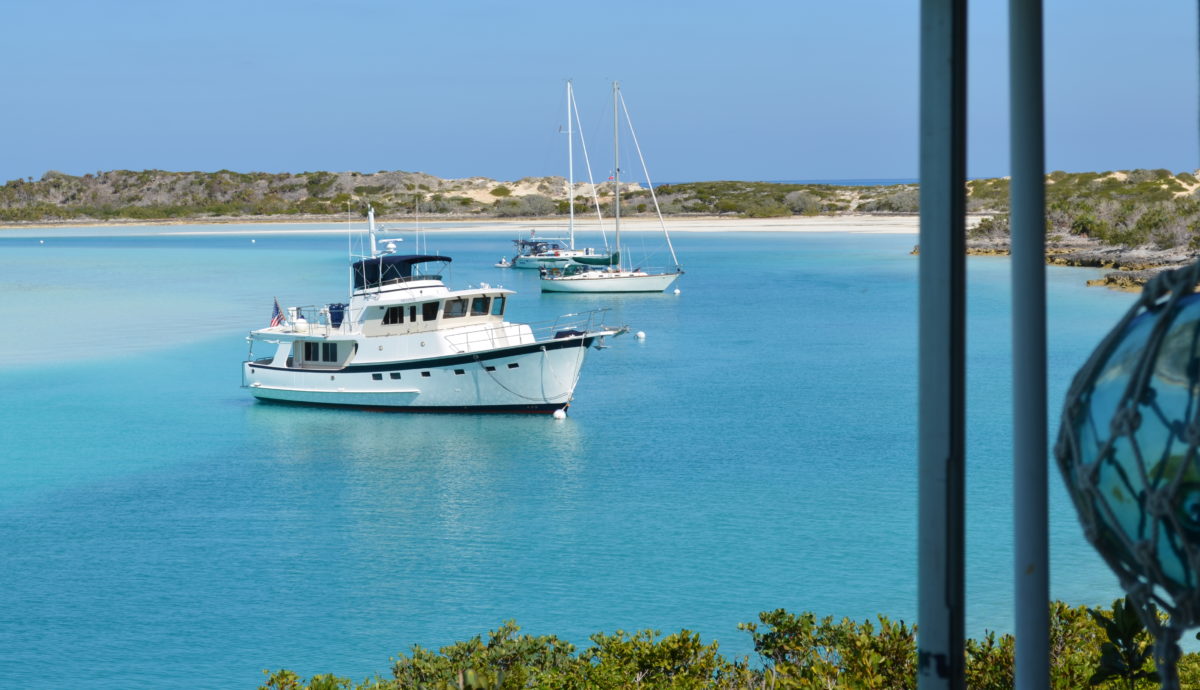 So here is a truism of boat ownership; New boats are no more reliable than well-maintained old boats. Not a very scientific analysis on my part, but we have owned a few old boats and now have a new one. Between the infant mortality of new equipment, and we are mostly beyond that now at the one year point, and systems complexity, the probability of failure is at least as high as for an older less complex boat. This new boat is significantly more complex than our prior boats, although the last sailboat was about the same size and had similar systems. While the systems themselves are much more reliable, because there are so many, one still stays busy fixing things. No matter what boat you own, bilge pumps still fail occasionally, and if you have five of them, the likelihood of a failure goes up. The good news is, Krogen installs nothing but the best subsystems in their boats, so that helps a lot.
So here is a truism of boat ownership; New boats are no more reliable than well-maintained old boats. Not a very scientific analysis on my part, but we have owned a few old boats and now have a new one. Between the infant mortality of new equipment, and we are mostly beyond that now at the one year point, and systems complexity, the probability of failure is at least as high as for an older less complex boat. This new boat is significantly more complex than our prior boats, although the last sailboat was about the same size and had similar systems. While the systems themselves are much more reliable, because there are so many, one still stays busy fixing things. No matter what boat you own, bilge pumps still fail occasionally, and if you have five of them, the likelihood of a failure goes up. The good news is, Krogen installs nothing but the best subsystems in their boats, so that helps a lot.
Start with our engines. The sailboat had a normally aspirated non-electronically controlled Westerbeake W100 diesel. It had 3000 hrs when we bought the boat and about 4000 when we sold her. Never stopped running other than for bad fuel or bad mistakes on my part. Our new engines, yes we have dual engines, are turbo charged, electronically controlled and have the latest in environmental protection systems. You can’t buy a simple diesel engine now, even if you wanted to. Our engines run fine but we spent the last three days here in NPB getting an all new engine ventilation system installed. All under warranty, and with great service from Krogen, but still a pain to deal with. I guess that is one reason why I specified twins to begin with.
Our hydraulics system is a marvel of engineering. We have pumps on both main engines and a boost pump on the genset. The boost pump provides increased power to the thrusters while the main engines are at idle during docking maneuvers. The hydraulics also power the dual windlasses and the stabilizers. On the one hand, the powerful windlass is great, on the other hand, I need at least one of the three engines running to power it. The stabilizers are Lisa’s favorite system on the boat. With her tendency to seasickness, stabilizers are a game changer for us. So far, they have worked flawlessly. But they had better because in anything other than a mill pond the lack of stabilization can get miserable quickly. Other than the basic physics of how hydraulic systems operate, I have no idea how I would fix a failure. The Trac hydraulic training course is only available on the West coast, but I may go. That said, ABT Trac is one of the best marine companies in the business. Their service is outstanding.
The challenge of complexity is not just from the increased probability of failure but the demands it puts on me to be able to repair anything when we are away from civilization. The hydraulics system is one example, our nav system is another. I could go on. So I tackle most any failure with the understanding that to be self-sufficient I need to be able to fix most anything on the boat, with assumption I can, or at worst, will do no harm. It doesn’t always work out that way.
The reason we are sitting here today instead of making progress to the islands is a case in point. I changed out the raw water pump on the genset and apparently got something wrong. One of the gears driving the pump is press fit on an eccentric shaft and I don’t have a gear press on board. I should have stopped as soon as I saw the challenge, but then again, it was a challenge to my self-sufficiency credo… Anyway, the gear got loose and the pump failed. The pros will be here on Monday to repair my screw-up. Meanwhile, we sit. Next time I will just let the pump seep a little. They all do sooner or later.
As to our progress south, we will miss the window tomorrow. No idea when the next one will present itself. I hate time and schedule pressure but we have committed to meet the boys in Georgetown in two weeks, so lets hope another window opens. Even a crack will do. What Lisa might call a “least bad” window.

You must be logged in to post a comment.